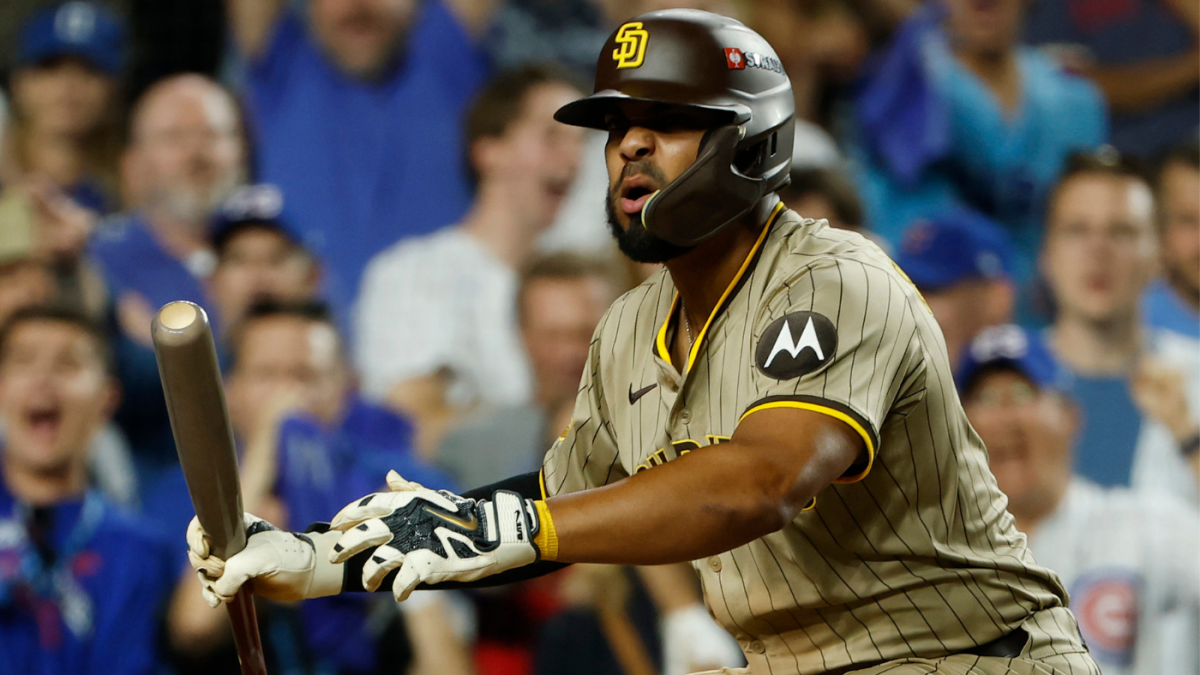

CHICAGO — If you’re not a white-knuckled partisan of either team — chair arms firmly and punishingly clenched — then the ninth inning of NL Wild Card Series Game 3 between the San Diego Padres and Chicago Cubs is what you want out of playoff baseball. In the deciding game of the series, won 3-1 by the host Cubs, the final inning provided intensity and drama worthy of October. It also merits revisiting as the Cubs prepare to duel with the Milwaukee Brewers in the Division Series and the narrowly vanquished Padres begin their offseason.
It began with the Cubs up 3-0 and reliever Brad Keller on the mound for his second frame of work after not appearing in Wednesday’s loss. Per basic win expectancy, the Cubs had a 96.8% chance of winning and closing out the series. Even before a pitch was thrown, it never felt that secure.
It certainly didn’t after the third pitch was thrown, a low-and-inside 1-1 changeup from Keller that Jackson Merrill lashed for a home run to right-center and the Padres’ first run of the game. This season, 14 of Merrill’s 16 regular-season home runs came against right-handers like Keller. Counsell still had a lefty in the pen available, but Taylor Rogers pitched in Game 2 and has generally struggled this season when working back-to-back days.
The next crucial moment of the top of the ninth came with a full count on the next batter, Xander Bogaerts. Keller placed a 3-2 fastball near the lower outside corner of the zone and catcher Carson Kelly snatch-framed it for a called strike three. Those watching via the magic of color-television saw it as an egregious miss on the part of plate ump D.J. Reyburn:
“Looked down to me,” Padres manager Mike Shildt said after the game. “You know, but I don’t see great, and I am kind of far away. But most importantly, Bogey felt like he was down. He is not a guy — you know, not any of our guys really, but Bogey in particular is not a guy that’s overly dramatic about close pitches. It’s a big pitch. It’s a big swing pitch. You know, it turns the tying run and what would have unfolded after that could have been very impactful, but we had other opportunities, too.”
Had this same pitch happened next year, Bogaerts surely would’ve tapped his helmet to challenge the pitch under the forthcoming ABS system. And just as surely it would’ve been ball four instead of strike three. Right? Maybe. However, Statcast graded the pitch as strike:
Baseball Savant
So maybe not, given that Statcast has better inputs than the K zone on your TV. The strike zone remains a many-splendored thing. The end result, though, is that the Padres instead of having the tying run at the plate with no outs had the bases empty and one out. For whatever it’s worth, absent the fractured finger that sidelined him for this series, hot-hitting deadline addition Ramón Laureano probably would’ve batted in this spot.
What happened next may have momentarily helped the Padres get past that potential missed call. Keller overcooked a 2-2 fastball and hit Ryan O’Hearn. Then a 1-2 changeup got away from him and hit Bryce Johnson‘s foot. That put the potential tying run on and thus brought the potential go-ahead run up in the person of Jake Cronenworth, and at that point Counsell went to right-hander Andrew Kittredge, who’d pitched in both Games 1 and 2 of the series.
That led to the next fraught moment of the inning:
The challenge was a worthy one given the moment, but Cronenworth was indeed out despite what seemed to be a brief hesitation on Matt Shaw‘s part before making the throw across the diamond. The Padres, no doubt, were left wondering what if Bogaerts had gotten that call above and the bases had been loaded. Is Shaw positioned differently, so as to make the play easier or harder? Does he start a 5-4-3 instead? Or does the change in base-out state change the pitch selection and thus the batted-ball outcome altogether? Unknowns abound, except in reality where it was two on two out and a two-run margin.
With the game on the line, Freddy Fermín put a good swing on a first-pitch sinker from Kitteredge but got just a bit under it. He hit hard, but the high launch angle made it peter out at 354 feet and into the able glove of Cubs center fielder Pete Crow-Armstrong. Like Cronenworth’s batted ball, Fermin’s had an expected batting average of just .170, and again the Padres were on the short end of the odds.
As it was in the ninth, it was for the series from the San Diego standpoint — just the wrong angle, the wrong bounce, the wrong flip of the coin.
This news was originally published on this post .







Be the first to leave a comment